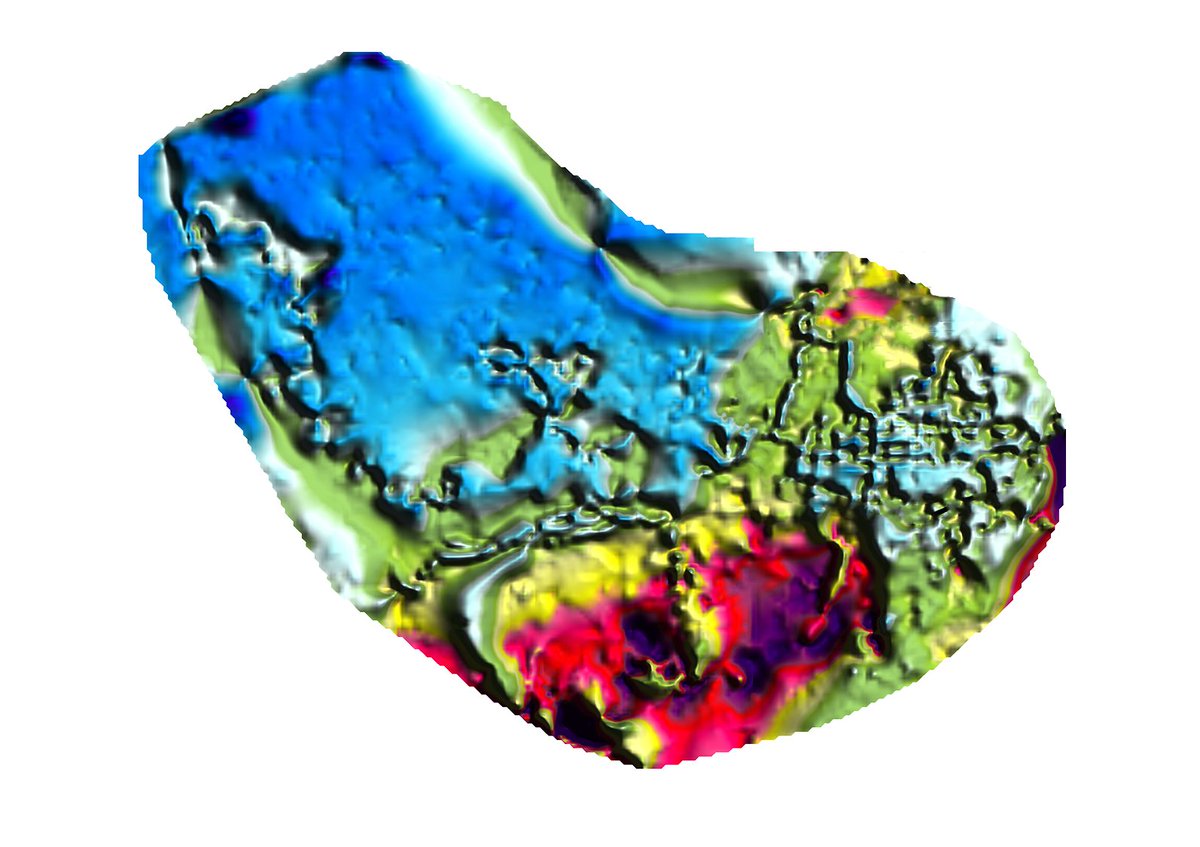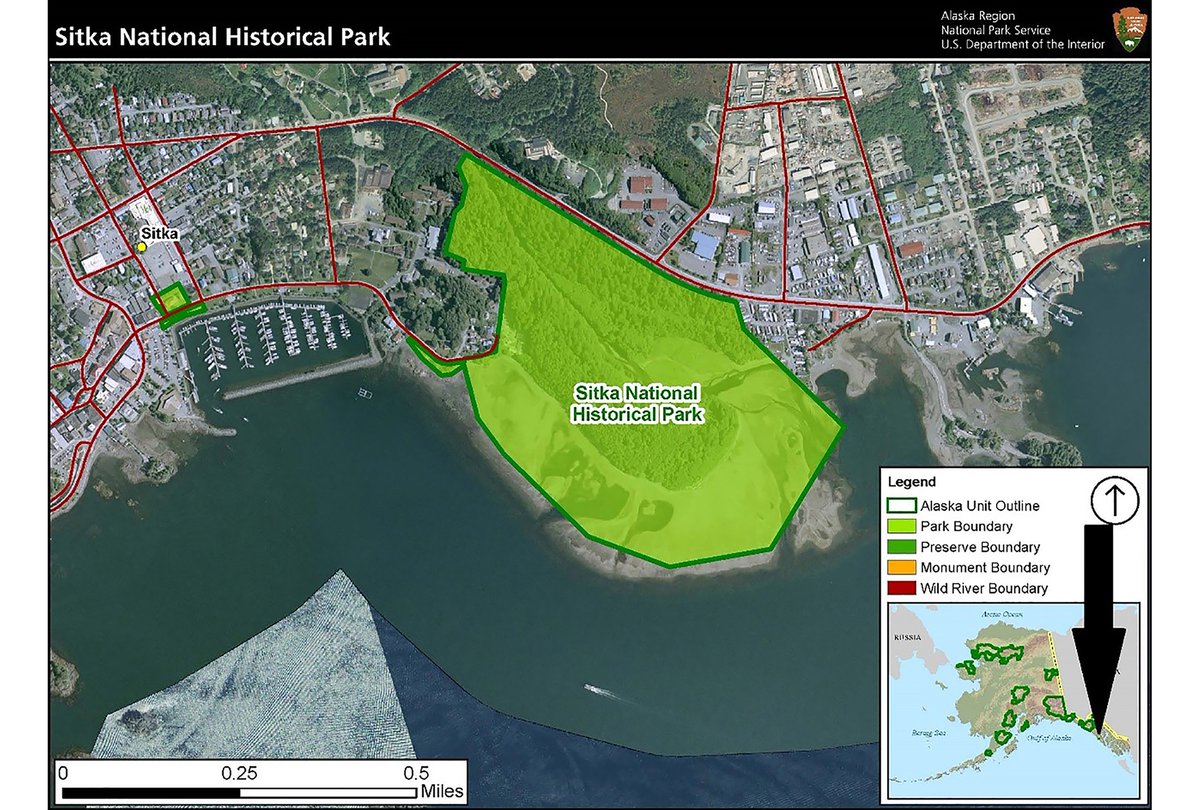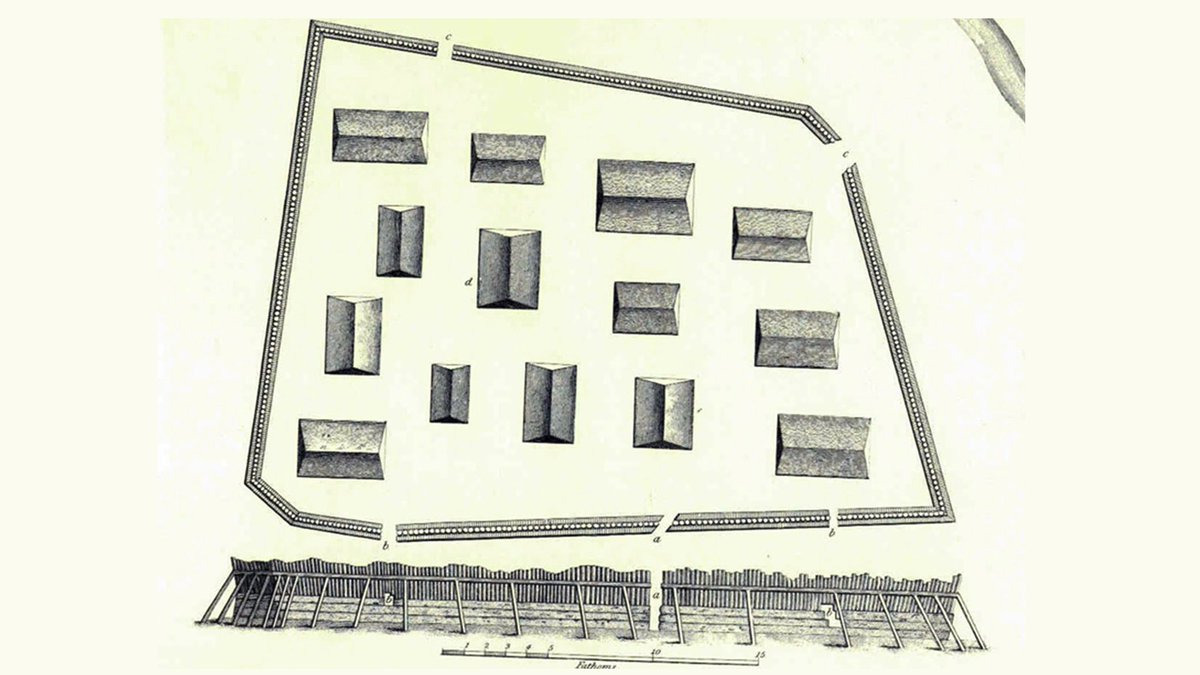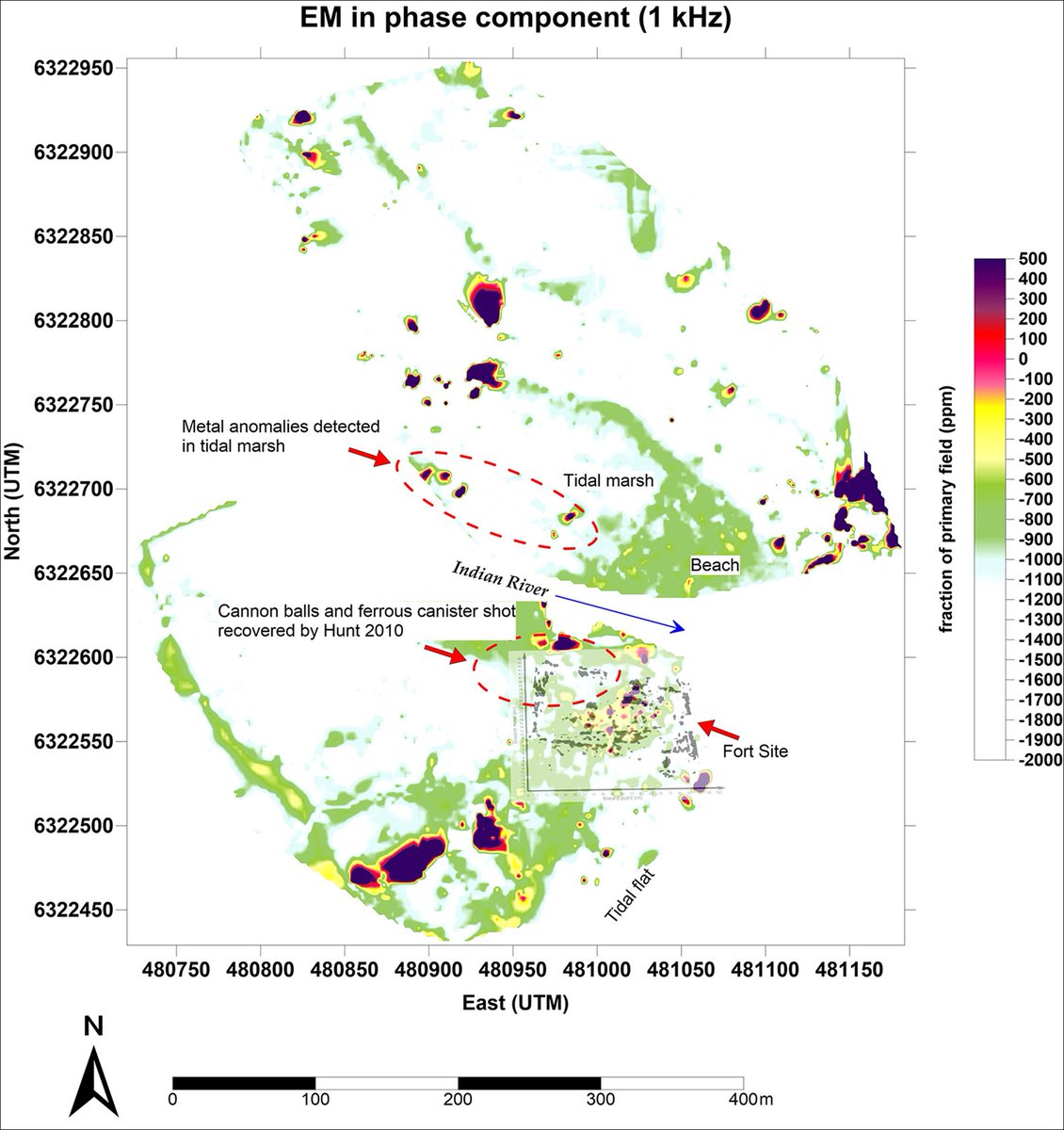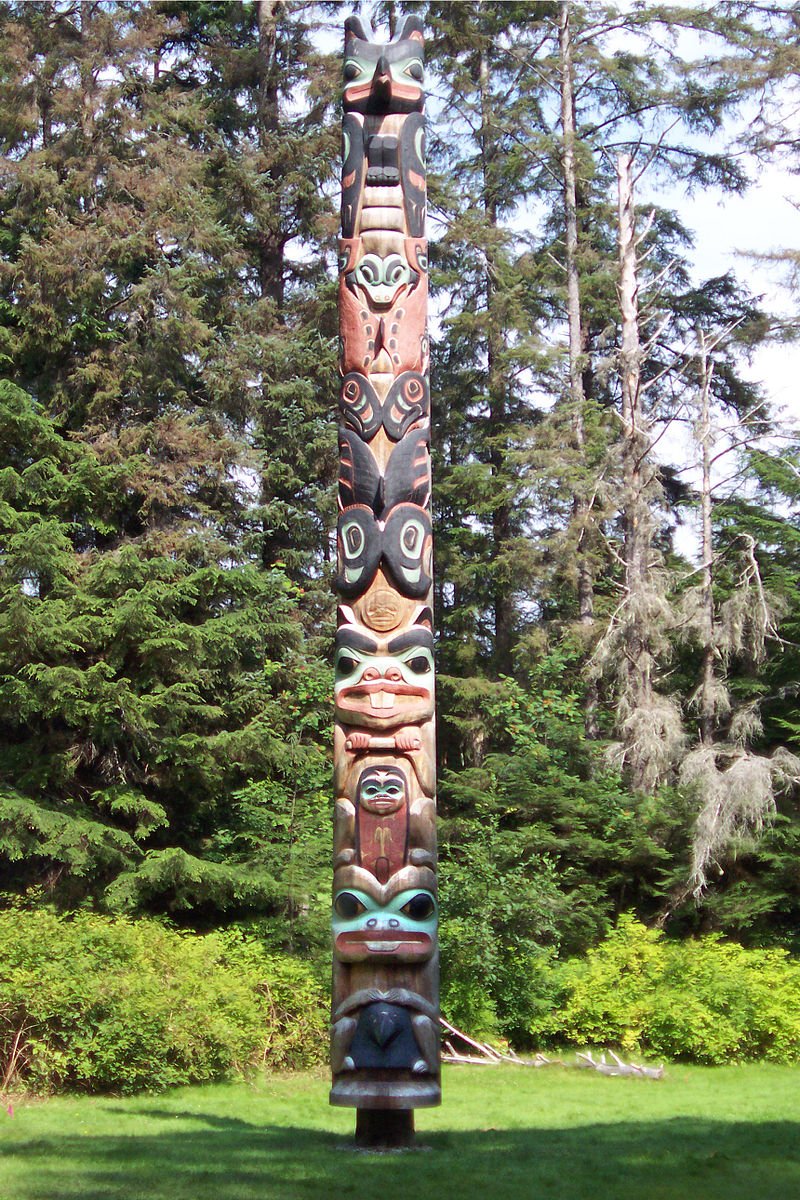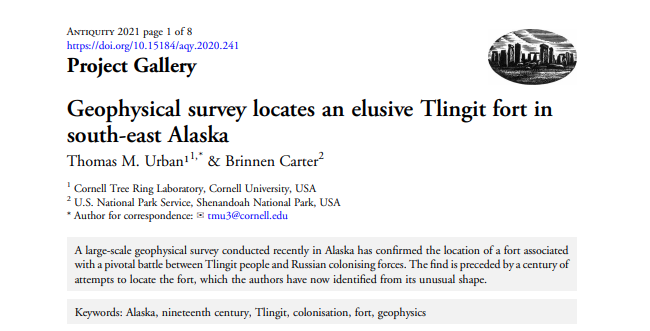 #archaeology: Researchers have located an elusive fort in Alaska, built by the Tlingit people, that the last barrier to fall before Russia’s occupation of the state in 1804.
#archaeology: Researchers have located an elusive fort in Alaska, built by the Tlingit people, that the last barrier to fall before Russia’s occupation of the state in 1804.Here's an #Antiquitythread on research published today (
 ) https://buff.ly/393jP4g
) https://buff.ly/393jP4g  1/
1/
Researchers from @Cornell and the @NatlParkService pinpointed the wooden fort in Alaska by using geophysical imaging techniques and ground-penetrating radar. 2/
 : Electromagnetic induction results revealing an anomaly in the top right consistent with the fort.
: Electromagnetic induction results revealing an anomaly in the top right consistent with the fort.
 : Electromagnetic induction results revealing an anomaly in the top right consistent with the fort.
: Electromagnetic induction results revealing an anomaly in the top right consistent with the fort.
The fort was the last physical barrier to fall before Russia’s six-decade occupation of Alaska, which ended when the United States purchased Alaska in 1867 for $7 million. 3/
The Tlingit built what they called Shiskinoow – the “sapling fort” – on a peninsula in modern-day Sitka, Alaska, where the mouth of Kasda Heen (Indian River) meets Sitka Sound at the Sitka National Historical Park. 4/
 : Location of Sitka National Historical Park.
: Location of Sitka National Historical Park.
 : Location of Sitka National Historical Park.
: Location of Sitka National Historical Park.
“The fort’s definitive physical location had eluded investigators for a century,” said co-author Thomas Urban, “Previous archaeological digs had found some suggestive clues, but they never really found conclusive evidence that tied these clues together.” 5/
To find Shiskinoow, Urban used electromagnetic induction methods & ground-penetrating radar. These modern tools picked up the fort’s unusual shape. 6/
 : Historical drawing of the fort, revealing the unique shape identified in the research
: Historical drawing of the fort, revealing the unique shape identified in the research
 : Historical drawing of the fort, revealing the unique shape identified in the research
: Historical drawing of the fort, revealing the unique shape identified in the research
“We believe this survey has yielded the only convincing, multi-method evidence to date for the location of the sapling fort, which is a significant locus in New World colonial history and an important cultural symbol of Tlingit resistance to colonization,” Urban said. 7/
In 1799, Russia sent a small army to take over Alaska in order to develop the fur trade, but the Tlingit successfully expelled them in 1802. 8/
Expecting the Russians to return, the Tlingit built a wooden fort over two years – the trapezoidal-shaped Shiskinoow. The Tlingit armed it with guns, cannons and gunpowder obtained from British American traders. 9/
When the Russians returned in 1804, the Tlingit held them off for five days, but suffered a setback when a gunpowder supply being carried to the fort from storage across Sitka Sound blew up in a canoe. 10/
 : EM data revealing anomalies that may be related to the battle
: EM data revealing anomalies that may be related to the battle
 : EM data revealing anomalies that may be related to the battle
: EM data revealing anomalies that may be related to the battle
The Tlingit clans escaped Shiskinoow by night across Shee (Baranov Island) to Cháatl Ḵáa Noow (Halibut Man Fort) and the Russians then established a trading post 11/
 : The Tlingit Ḵʼalyaan Pole to commemorate those lost in the battle, by Lordkinbote / CC BY-SA 2.5,
: The Tlingit Ḵʼalyaan Pole to commemorate those lost in the battle, by Lordkinbote / CC BY-SA 2.5,
 : The Tlingit Ḵʼalyaan Pole to commemorate those lost in the battle, by Lordkinbote / CC BY-SA 2.5,
: The Tlingit Ḵʼalyaan Pole to commemorate those lost in the battle, by Lordkinbote / CC BY-SA 2.5,
“A large-scale survey was necessary to convincingly rule out alternative locations for this historically and culturally significant structure,” said co-author Brinnen Carter of the National Parks Service. 12/12
Grab the whole paper,  on #FirstView:
on #FirstView:
Geophysical survey locates an elusive Tlingit fort in south-east Alaska https://doi.org/10.15184/aqy.2020.241
 on #FirstView:
on #FirstView:Geophysical survey locates an elusive Tlingit fort in south-east Alaska https://doi.org/10.15184/aqy.2020.241

 Read on Twitter
Read on Twitter